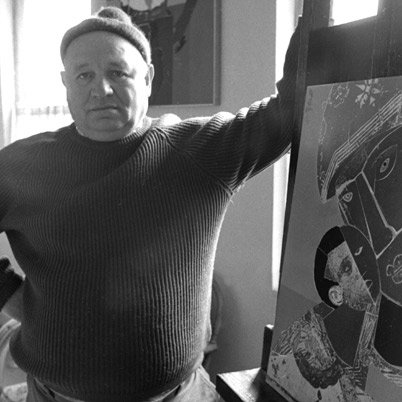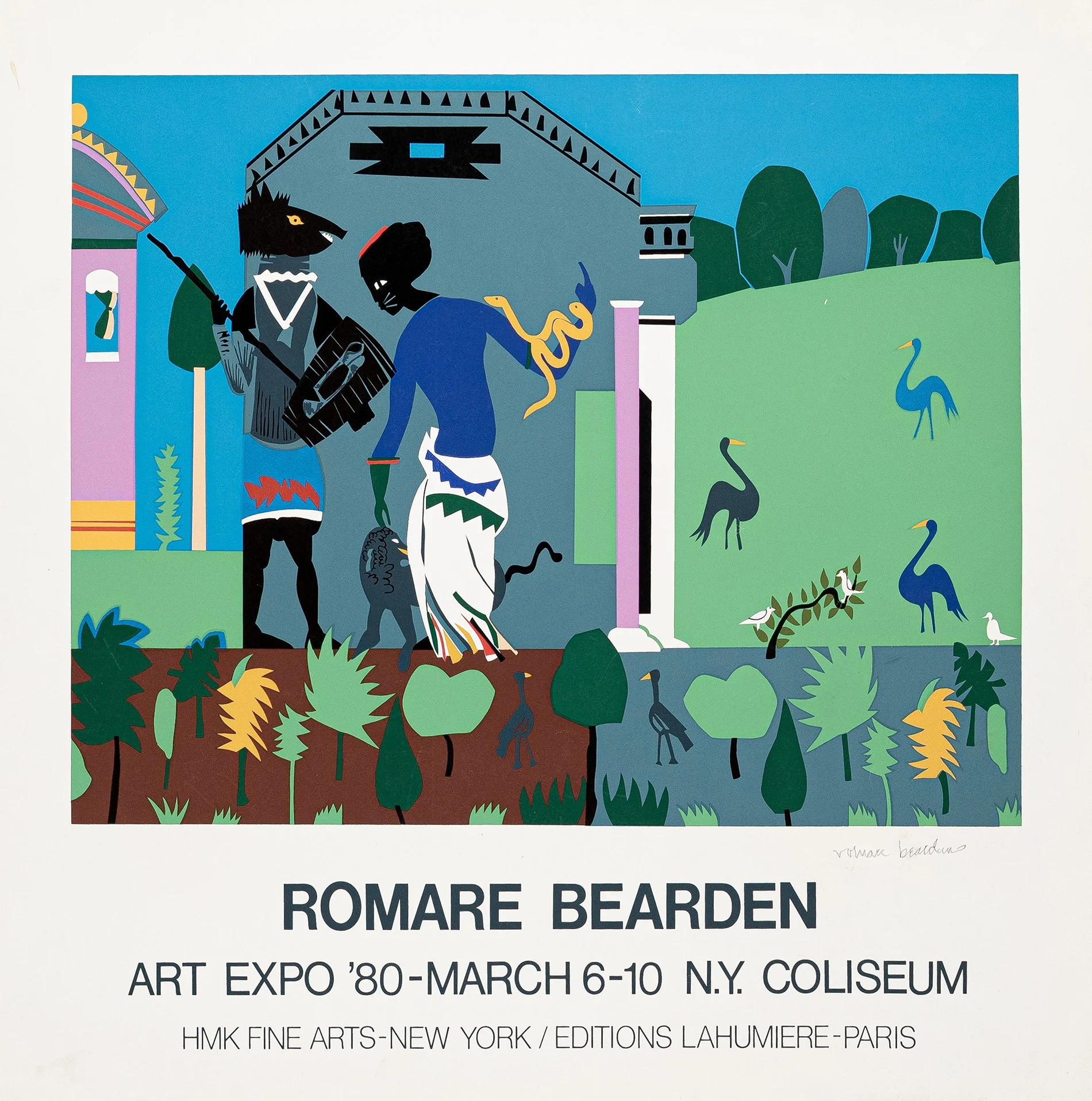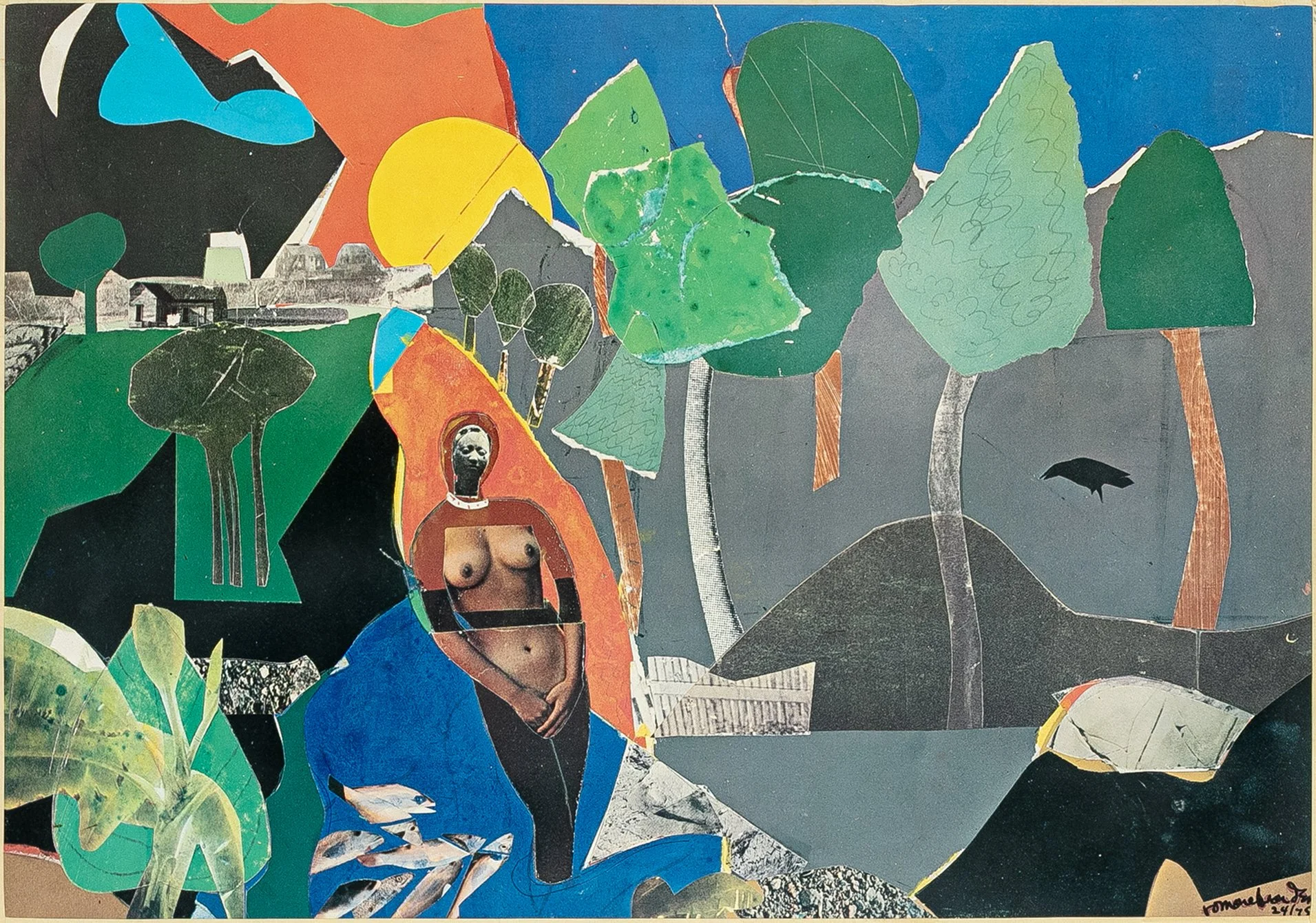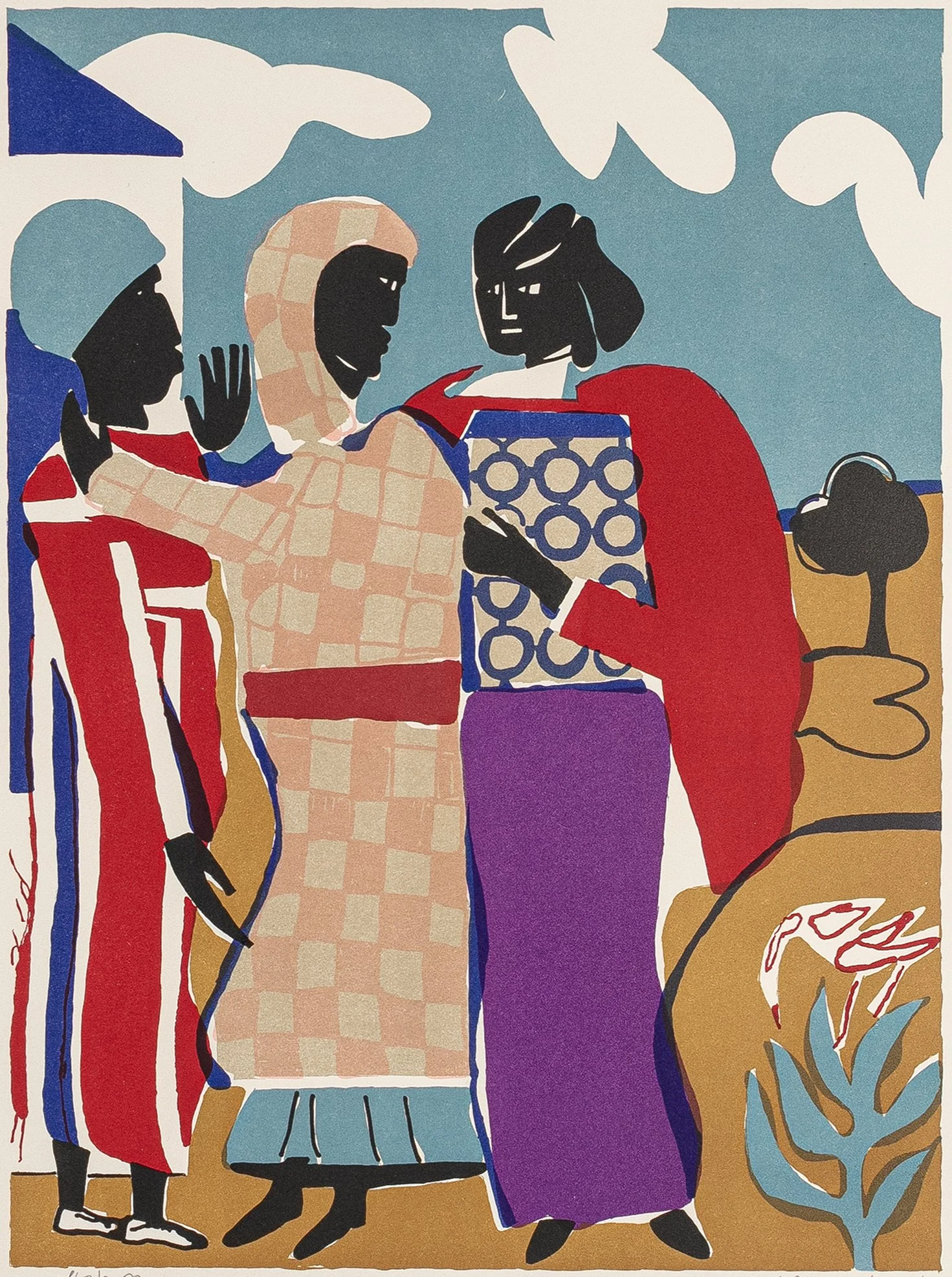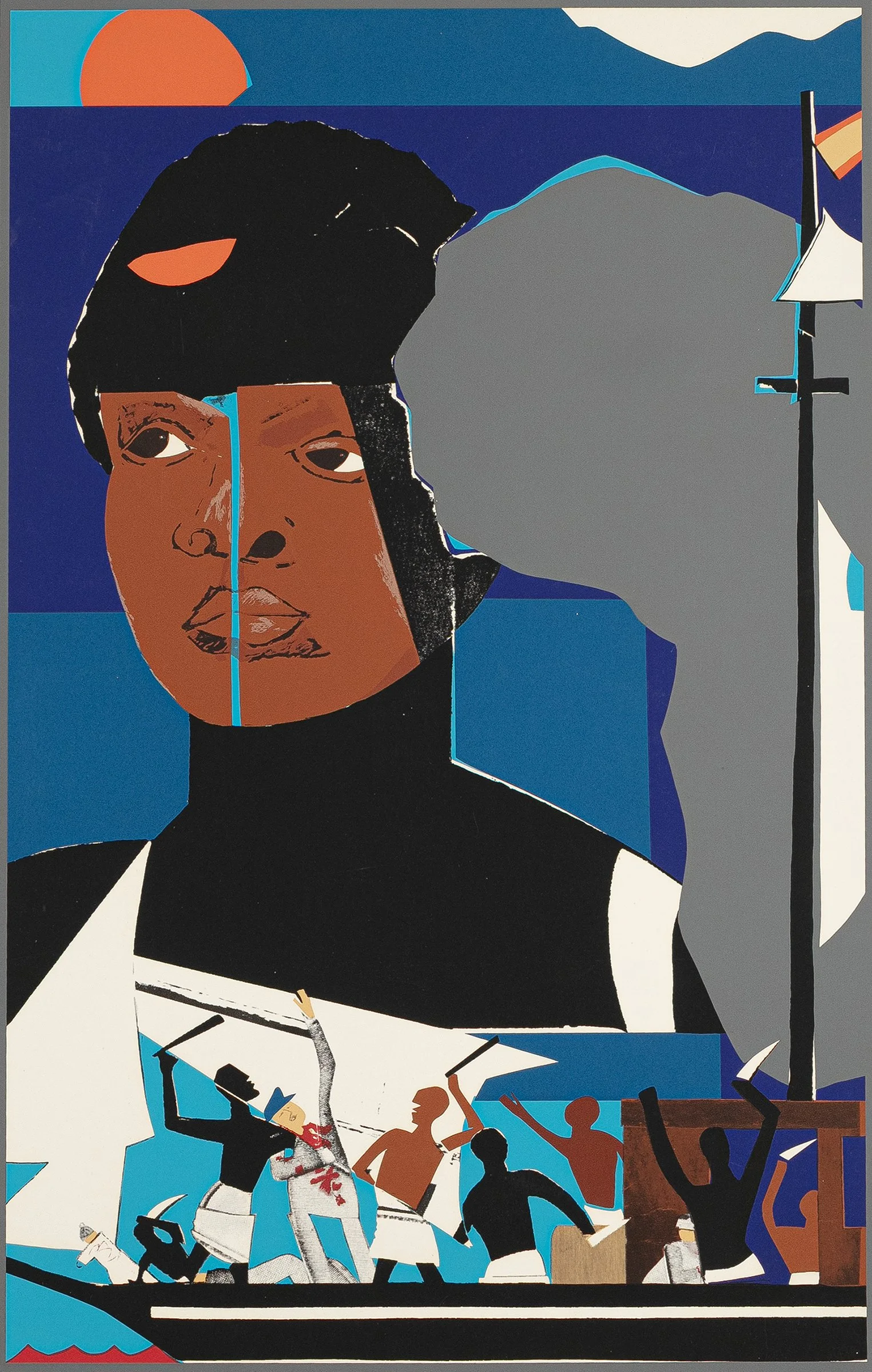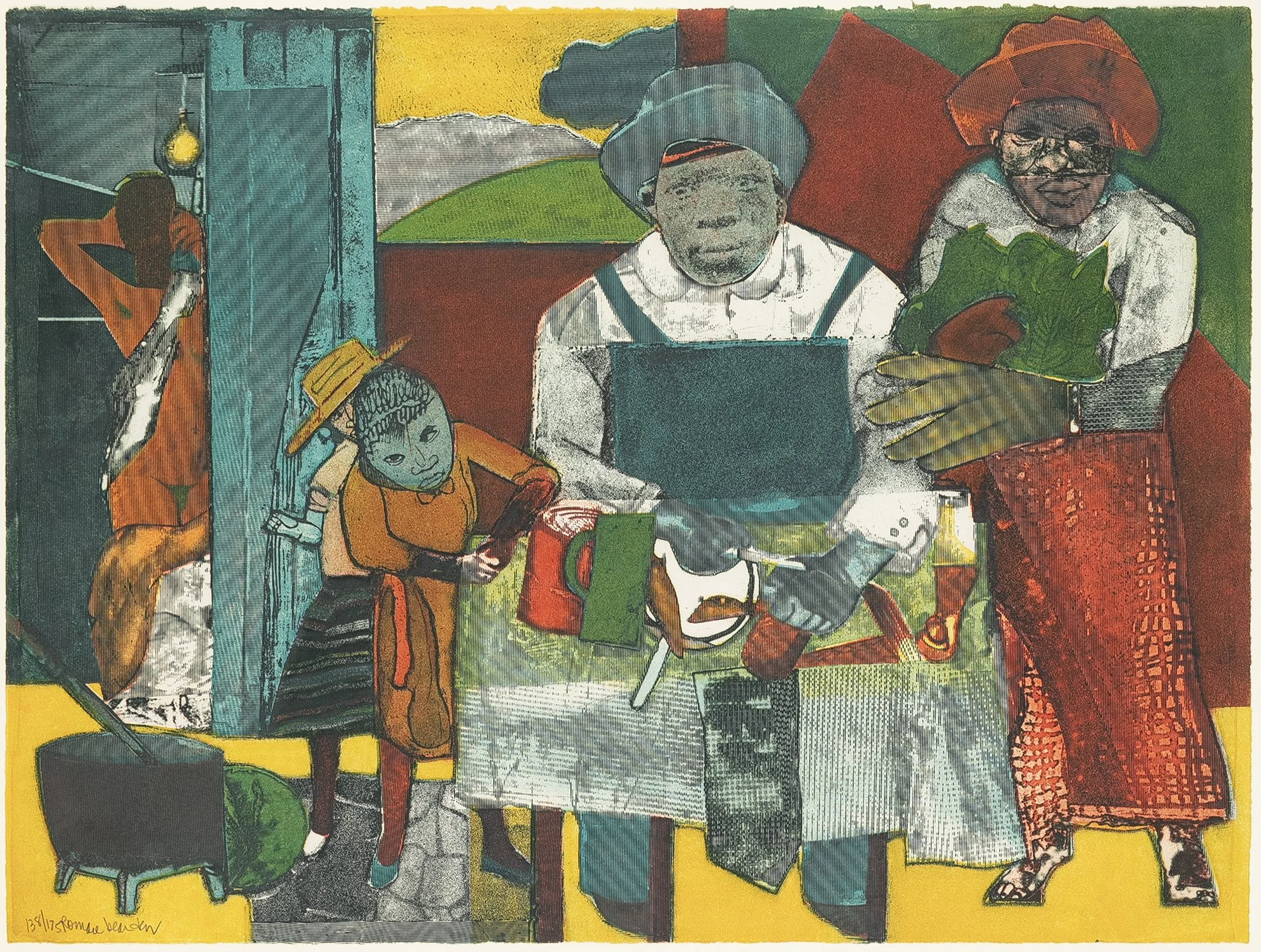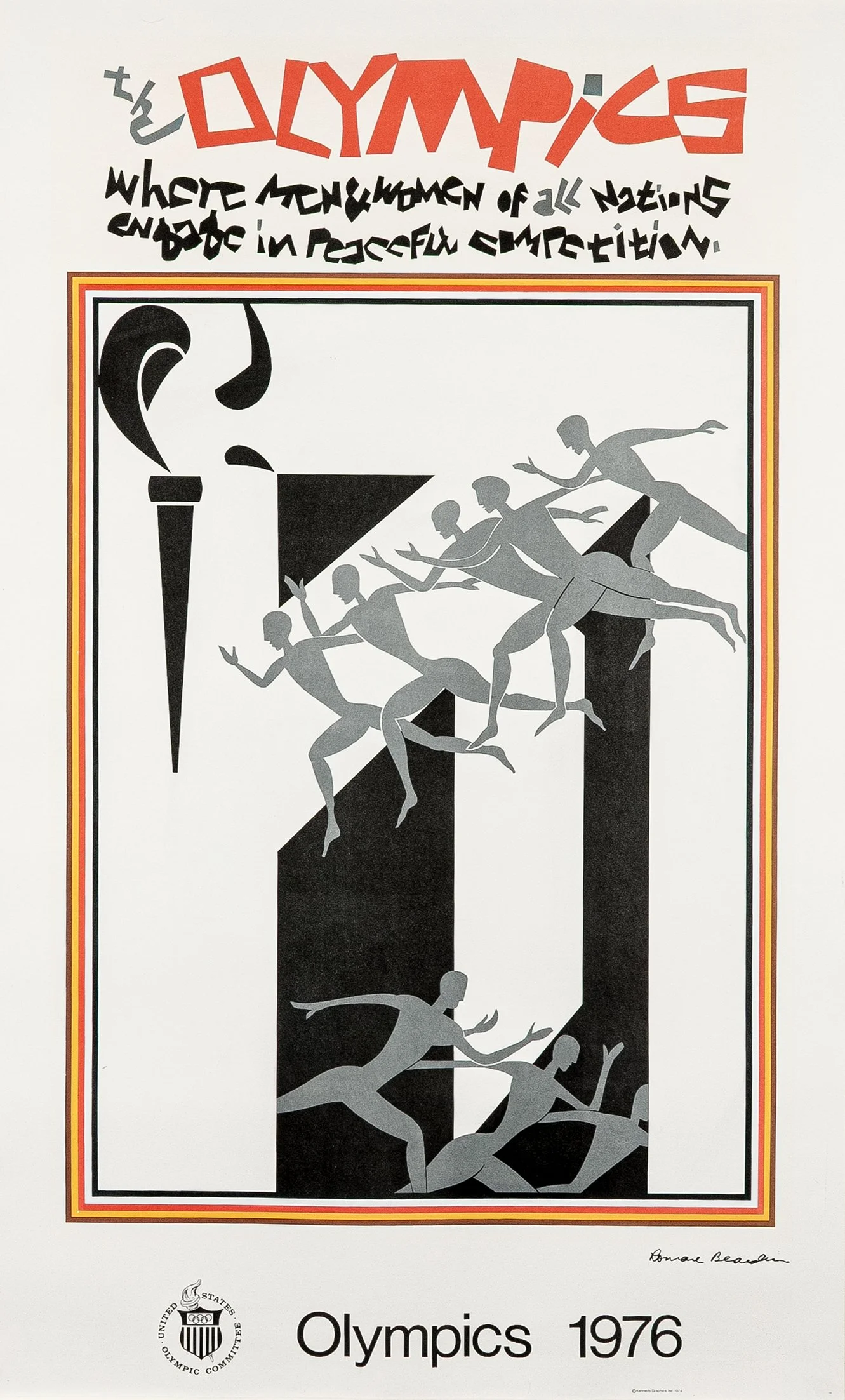
Romare
Bearden
(1911-1988)
Romare Bearden is widely regarded as the leading collagist of the twentieth century, an artist who fused modernist structure with the visual cadences of Black life. Born in Charlotte, North Carolina, and raised in Pittsburgh and Harlem, he grew up amid the intellectual currents of the Harlem Renaissance. His mother, Bessye Bearden, worked on the New York staff of the Chicago Defender. Bearden studied at New York University and the Art Students League with George Grosz, and was involved with the earliest incarnation of the Harlem Artists Guild and Charles Alston’s 306 group. After serving in the U.S. Army during World War II, Bearden spent time in Paris before returning to New York, where he balanced work as a social worker with an increasingly ambitious studio practice.
By the early 1960s, Bearden had made collage his primary language. Using cut photographs, magazine images, painted and printed papers, and rhythmic blocks of color, he built scenes that compress memory and myth, front porches, trains, baptisms, blues clubs, into tight architectural grids. In 1963, he joined Spiral, a circle of artists exploring the role of art in the civil-rights era, and later co-founded Cinque Gallery to support emerging Black artists. Landmark bodies of work, from the Projections (photostat enlargements of collages) to the Odyssey series, reveal his range: from social tableau to classical narrative, all grounded in improvisation akin to jazz.
Bearden exhibited widely in the United States and abroad; his works are held by major museums including the Met, MoMA, and the National Gallery of Art. Across five decades, he proved that collage could carry the weight of history, refracting everyday experience into images that feel both intimate and monumental.
Parsons Barnett Gallery, Oakland, CA
1980; screen print and offset lithograph on wove paper, 25 x 14 inches (image), signed and dedicated: for Mr Parker
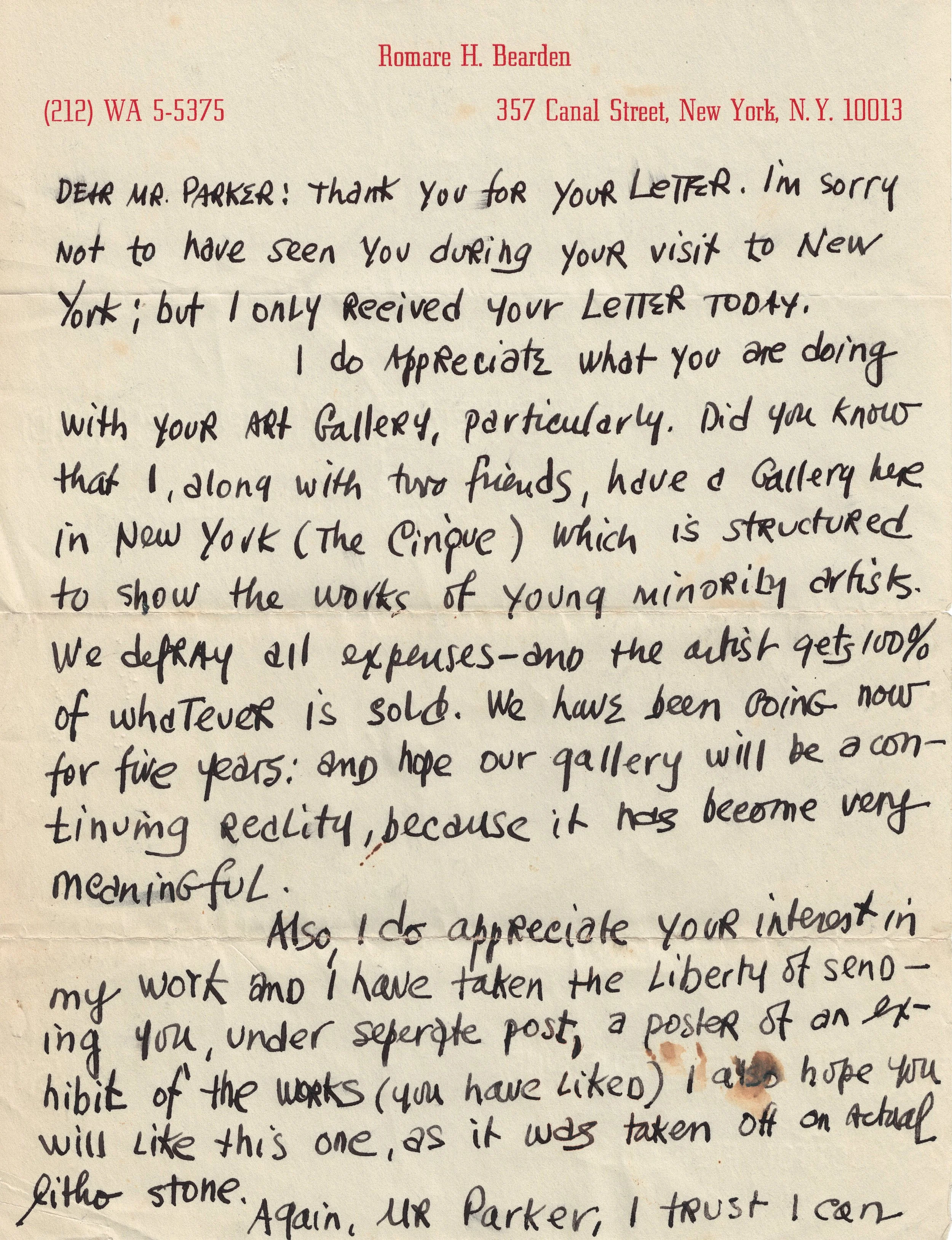

In the early 1970s, Bearden set out to make a few editions of collages from photo-lithographs printed from unique collages he had exhibited earlier at the Museum of Modern Art and the Everson Museum of Art. The overall image is not a single lithograph, but constructed with actual clippings arranged to form the composition. The project was commissioned by Sam Shore, a collector, but was likely overly-ambitious and Bearden did not finish it.
Grant Hamming, PhD, American Art Research Fellow, writing for the Rollins Museum of Art, discusses Byzantine Frieze, included in the museum's collection:
Byzantine Frieze is particularly interesting, because it highlights one of the most striking aspects of Bearden's work. At the Art Students League in the 1930s, Bearden had studied with the German-American painter George Grosz, one of the foremost participants in the neue Sachlichkeit (New Objectivity) movements of interwar Germany. Grosz and his colleagues were pioneers of socially conscious art, which was also dominant in the United States during the Great Depression.
Ritual Bayou (Byzantine Frieze)
1971
editioned collage (from an original set of 6), color photo-lithograph mounted on finished plywood, as issued
15-1/2 x 20 inches
signed and numbered 24/75 in ink.
Published by Sherwood Publishers, New York.
Bearden long believed, however, that Grosz's most important contribution to his development as an artist was his emphasis on art history. In between painting demonstrations Grosz showed his students slides of works from the Renaissance to more recent times, and Bearden always returned to Old Masters such as Johannes Vermeer as well as more recent artists, including Pablo Picasso and Hannah Hoch. In Byzantine Frieze he combines all of these interests, presenting his images of Black women and children in a flat, orderly procession reminiscent of the mosaics of the Roman Empire. The combination of the strong figures of the women with knives, blood, and other hints of violence demonstrates Bearden's commitment to showing both the triumphs and tribulations of the African American experience, always with his eye to the history of art.
Ref: Grant Hamming, American Art Research Fellow. “Work of the Week: Romare Bearden, ‘Byzantine Frieze (from the Series Ritual Bayou)’ - Rollins Museum of Art.” Rollins Museum of Art - Museum Blog, 28 Feb. 2022, blogs.rollins.edu/rma/2022/02/01/work-of-the-week-romare-bearden-byzantine-frieze/.
Art Expo New York, 1980 offset lithographic poster HMK Fine Arts, New York Edition, Lahumiere-Paris bears signature (likely not by artist)
Jazz II Deluxe, 1980 color screenprint 26-3/4 x 37-1/2 inches, full margins. signed with A/P Gelburd/Rosenberg GG#100.
Salome, after 1974 offset lithograph made from the screen print from the Prevalence of Ritual series 6-1/4 x 7-3/4 inches signed and dedicated To Mr Parker
Ritual Bayou Series, Memories, 1971 editioned collage (from an original set of 6), color photo-lithograph mounted on finished plywood, as issued 15-1/2 x 20 inches signed and numbered 24/75 in ink. Published by Sherwood Publishers, New York.
Mecklenburg Morning: Sunrise for China Lamp, 1993 (posthumous print) offset lithograph in colors 29 x 37 7/8 inches (image) 35 1/8 x 43 7/8 inches (sheet) printed signature to lower right numbered 647/950 in pencil in margin published by American Vision Gallery Inc., Folsom, California
Ritual Bayou (Carolina Interior), 1971 editioned collage (from an original set of 6), color photo-lithograph mounted on finished plywood, as issued 15-1/2 x 20 inches signed and numbered 24/75 in ink. Published by Sherwood Publishers, New York.
Pilate, 1979 color lithograph on Arches paper 22-1/2 x 15-1/4 inches (image) 28 x 21 inches (sheet) signed, titled, dated, and numbered 286/300 GG#82
Three Women, Easter Sunday, 1979 color screenprint 20-1/4 x 15 inches signed and numbered, 287/300 GG# 84
Slave Ship, 1977 silkscreen 28-1/8 x 17-3/4 inches (image) 35 x 24-1/2 inches (sheet) signed and numbered, 13/144 GG#61
Conjunction, 1979 color lithograph 18-3/4 x 14-7/8 inches, full margins signed and numbered 30/300 GG#85
The Family, 1975 color aquatint and photo engraving 19-1/2 x 25 inches (sheet) signed and numbered, 138/175 Printed by the Printmaking Workshop, New York and published by Transworld Art, New York, with the blind stamp lower right. From "An American Portrait, 1776-1976". GG#55A.
The Olympics: Where Men and Women of All Nations Engage in Peaceful Competition, 1976 color screen print poster 40 x 25 inches (full margins) printed signature in the image Gelburd/Rosenberg #53

Recent Selected Exhibitions
2020 Something Over Something Else: Romare Bearden’s Profile Series; High Museum of Art, Atlanta, GA; Cincinnati Art Museum, OH
2021 Romare Bearden: Abstraction; American Federation of Arts national tour
2023 Bearden/Picasso: Rhythms and Reverberations, Mint Museum Uptown, Charlotte, NC
2024 The Harlem Renaissance and Transatlantic Modernism; Metropolitan Museum of Art, New York, NY
2024 Romare Bearden: Resonances, Saint Louis Art Museum, MO
2024 Edges of Ailey, Whitney Museum of American Art, New York
2025 Paris Noir: Artistic circulations and anti-colonial resistance, 1950–2000, Centre Pompidou, Paris, FR
